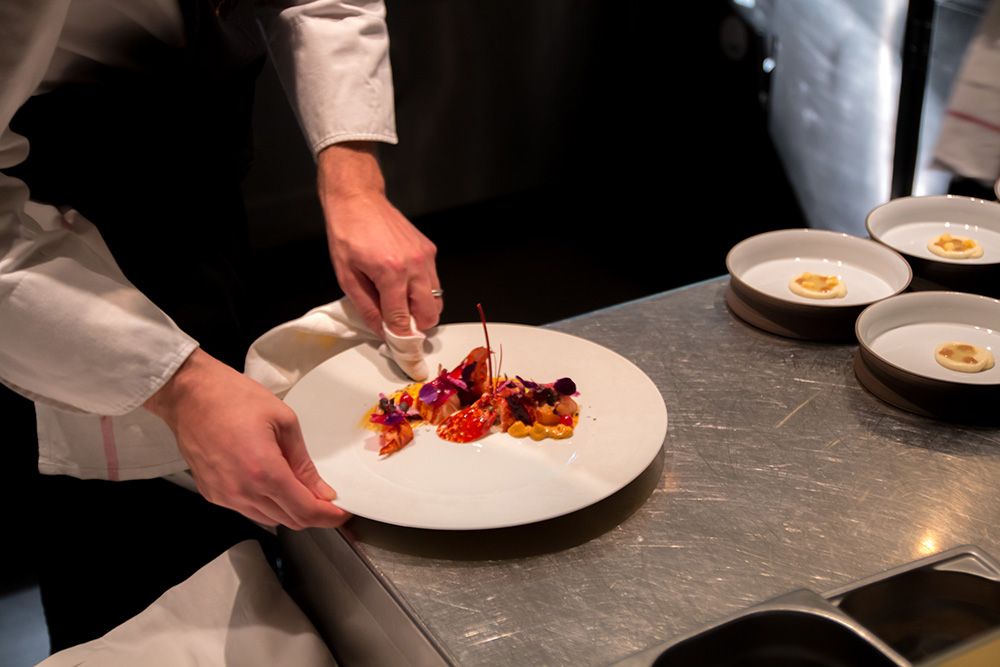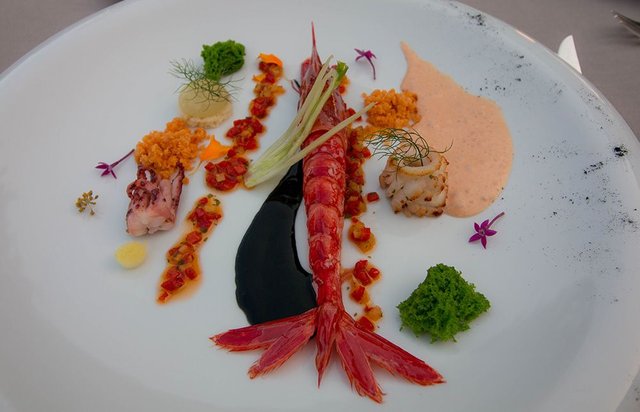Many associate a restaurant with Michelin stars as something fancy. Someplace only rich people go, where you get super small portions of food and leave hungry. We used to think the same way. Today, however, after visiting over 100 of them (still counting), we have a completely different idea of them. First of all, all the assumptions made by “non-Michelin star” people, are false. We will explain more about it later on, but first a small history lesson. If you do not like history, just skip this part.

HISTORY
The Michelin guide started out as a motorist guide in France in early 1900. With less than 3000 cars in the whole country at that time, it contained useful information with maps for petrol stations, hotels, service stations and restaurants. In 1926, the guide started rewarding a star to exceptional good restaurants but redefined it in 1936 by ranking them with 1, 2 or 3 stars. The criteria for these have remained the same ever since with the following definition:
- Very good restaurant in its category
** Excellent cooking, worth a detour
*** Exceptional cuisine, worth a special journey
What Michelin does is, in their guide, they list restaurants per city or country. If your restaurant deserves a star, it will have it behind its name. Like a small side-note *. So, in essence, it is not comparable with stars you reward to a hotel or a review for example. This confuses people as they would expect 5 stars to be the max, as often happens with other ranking systems. Keep in mind that this is not ranking at all. Having no stars does not mean that it is a bad restaurant.

MISCONCEPTIONS
Now you know a little bit more about the use of stars, we will tell you more about the food that you get in Michelin star restaurants. In theory, a pizzeria could get a star, as long as it is exceptionally good. Michelin acknowledges this and in 2016 rewarded a noodle shop in Singapore a Star, making it, at $2, the cheapest Michelin star food you can get. The focus is on the food, not the restaurant itself. So let’s get a couple of misconceptions out of the way.
Fancy
Not all Michelin starred restaurants are fancy. Although it is true that the majority of them are, more and more chefs try to give their restaurant a young and fresh look to attract younger people. Not all restaurants have white linen tables with your table all set up for the whole meal. Some have rough wooden tables, bright colored art, lounge areas and hip music. Having said that, for a lot of chefs it still is about the fanciness and the experience. Some even invest a lot in their decor and staff, thinking it will influence Michelin’s decision to reward them an extra star. It does influence other ratings given by Michelin, but not the star.Price
As mentioned earlier, you can get a Michelin star meal for as low as $2. So that is the end of that. No, let’s be serious. It is true that often Michelin star restaurants are a bit more expensive. Very normal, as most of them use the best possible ingredients and tend to have more staff. But it is not something only millionaires can afford. Most 1 star restaurants today offer 3 or 4-course meals for around €60 and all-in 6-course meals (with wine) for around €140. A very fair price. Just like hotels some would be less and some are more expensive, but the majority today fluctuate between €60 and €140 for a meal. Increase in stars and naturally, prices increase as well but you would rarely find meals that cost over €200 (wine excluded), even in 3-star restaurants. Of course, this depends on the location and popularity of the restaurant.Small dishes
This is probably one of the most misunderstood point on the list. Why? it is simply not true. With over 100 Michelin star restaurants on our visited list, we have never walked out of one feeling hungry. In some cases, we even had difficulty finishing it all. Dishes are not as small as people think. Some are, but those are usually considered appetizers, amuses or tastings.

HOW TO GET A STAR
Michelin has critics all over the world. All of them are anonymous and Michelin keeps everything around the visits and their critics a secret. Every country or region has multiple critics. It is not one single person that decides whether or not you are worthy of a star. It often takes multiple visits at different times with different groups of people to decide. Something assumed wrongly, also due to movies like Burnt, is that critics always work in a predictable pattern. The truth is, you do not know who they are. They do not test you in any noticeable way. They visit just like any other guest. Sometimes alone, in pairs or even large groups. Once you are awarded a star, they will keep coming back regularly to ensure the quality.

THE DARK SIDE
Many chefs are obsessed by the stars. Some make it their life’s mission to receive a number of them. In 2003 chef Bernard Loiseau committed suicide in his kitchen while the restaurant was full, after rumors started of him losing his third star. Chefs live up to this moment, once a year, when Michelin announces their new guide. It is mostly about status and competition between colleagues. Although some pressure lies within the actual business. Business can grow substantially once you receive a star or more. But once you lose one, this could seriously damage your reputation and business. For this reason some chefs refuse to be listed in the guide. Even if they are worth a star, simply because of the fear losing it again at some point.
Hi! I am a robot. I just upvoted you! I found similar content that readers might be interested in:
https://touristexclusive.com/michelin-star/
Downvoting a post can decrease pending rewards and make it less visible. Common reasons:
Submit
Congratulations @touristexclusive! You have completed some achievement on Steemit and have been rewarded with new badge(s) :
Click on any badge to view your own Board of Honor on SteemitBoard.
For more information about SteemitBoard, click here
If you no longer want to receive notifications, reply to this comment with the word
STOPDownvoting a post can decrease pending rewards and make it less visible. Common reasons:
Submit